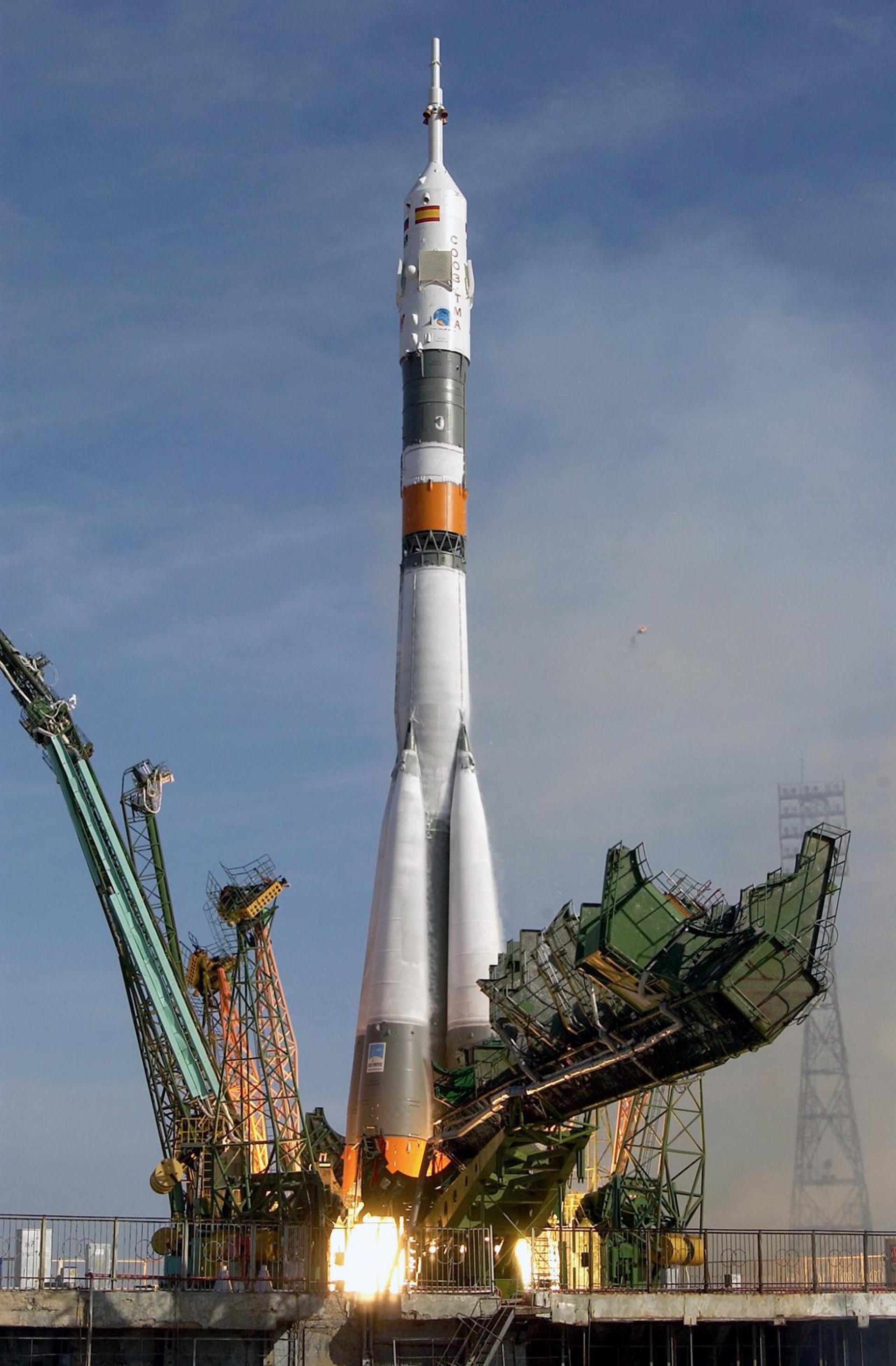Phạm Tuân
Vietnamese - (RFSA)
Retired
Date of Birth: Feb. 14, 1947
Age: 78
Phạm Tuân (born February 14, 1947) is a retired Vietnam Air Force aviator. He became the first Vietnamese citizen and the first Asian in space when he flew aboard the Soyuz 37 mission as an Intercosmos Research Cosmonaut. Tuân reached the rank of lieutenant colonel in the VPAF before eventually training to be a research cosmonaut in the joint USSR-Vietnamese Space program. On April 1, 1979, he was selected as a member of the sixth international crew for the Intercosmos program. His backup was Bùi Thanh Liêm. Tuân, along with Soviet cosmonaut Viktor Gorbatko, was launched from Baikonur Cosmodrome on July 23, 1980, on board the Soyuz 37 mission to the Salyut 6 space station.
Soyuz-U | Soyuz 36
Russian Federal Space Agency (ROSCOSMOS) | RussiaBaikonur Cosmodrome, Republic of Kazakhstan
May 26, 1980, 6:20 p.m.
Status: Success
Mission:
Soyuz 36 was the ninth mission to visit the Salyut 6 space station and carried the EP-5 crew, which visited the long-duration Soyuz 35 resident crew. The mission began on May 26, 1980, 18:20:39 UTC, launching Commander Valery Kubasov and Research Cosmonaut Bertalan Farkas, the first Hungarian cosmonaut, into orbit. They docked with the station the next day. During their 7-day stay on the station, EP-5 crew conducted various scientific experiments, including measuring radiation doses received by the crew. Soyuz 36 swapped vehicles with the resident station crew, and returned in Soyuz 35 spacecraft. The mission concluded with a safe landing back on Earth on June 3, 1980, 15:06 UTC.
Low Earth OrbitSoyuz-U | Soyuz 37
Russian Federal Space Agency (ROSCOSMOS) | RussiaBaikonur Cosmodrome, Republic of Kazakhstan
July 23, 1980, 6:33 p.m.
Status: Success
Mission:
Soyuz 37 was the 11th mission to visit the Salyut 6 space station and carried the the EP-7 crew, which visited the long-duration Soyuz 35 resident crew. The mission began on July 23, 1980, 18:33:03 UTC, launching Commander Viktor Gorbatko and Research Cosmonaut Pham Tuân, the first Viatnamese cosmonaut, into orbit. They docked with the station the next day. During their 7-day stay on the station, EP-7 crew carried out some experiments. They also swapped vehicles with the resident station crew, and returned in Soyuz 36 spacecraft. The mission concluded with a safe landing back on Earth on October 11, 1980, 09:49:57 UTC.
Low Earth OrbitThe Roscosmos State Corporation for Space Activities, commonly known as Roscosmos, is the governmental body responsible for the space science program of the Russian Federation and general aerospace research. Soyuz has many launch locations the Russian sites are Baikonur, Plesetsk and Vostochny however Ariane also purchases the vehicle and launches it from French Guiana.
Falcon 9
Starlink Group 11-15
Space Launch Complex 4E - Vandenberg SFB, CA, USAA batch of 28 satellites for the Starlink mega-constellation - SpaceX's project for space-based Internet communication system.
Long March 8A
SatNet LEO Group 14
Commercial LC-1 - Wenchang Space Launch Site, People's Republic of ChinaA batch of 9 Low Earth Orbit communication satellites for the Chinese state owned SatNet constellation operated by the China Satellite Network Group.…
Kuaizhou-1A
Traffic VDES A & B
Launch Area 95A - Jiuquan Satellite Launch Center, People's Republic of ChinaTwo technology demonstration satellites for satellite transmissions of signals for the VHF Data Exchange System (VDES), a successor to the current Au…
Falcon 9
Starlink Group 11-25
Space Launch Complex 4E - Vandenberg SFB, CA, USAA batch of 28 satellites for the Starlink mega-constellation - SpaceX's project for space-based Internet communication system.
Zhuque-3
Demo Flight
Launch Area 96B - Jiuquan Satellite Launch Center, People's Republic of ChinaFirst test launch of LandSpace’s ZQ-3 rocket, with a dummy payload. The rocket’s 1st stage will attempt to land on a landing pad about 300 km downran…



